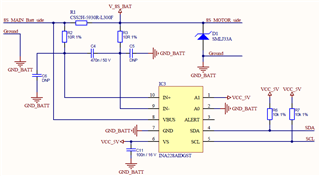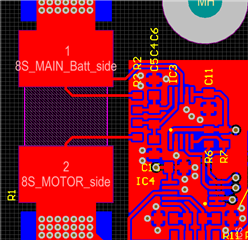Hello,
I'm trying to measure current and bus voltage with INA228 monitor. Since current in the load could reach up to 100 A (peak), 300 uOhm resistor (CSS2H-5930R-L300F) is used as a shunt resistor. With ADCRANGE=1 such resistor value is capable for currents up to 136.5 A, with ADCRANGE=0 maximum current can be 4 times higher.
As a load during testing I used electronic load device (B&K Precision BK8614) which has (of course) capability to select desired current that will flowing in to the load.
However, regardless ADCRANGE=1 or ADCRANGE=0 is used, I get the simillar "wrong" measurements:
| Current to the electronic load (A) | Current measured with INA228 (A) |
| 1 | 1.00 |
| 10 | 9.47 |
| 20 | 18.89 |
| 30 | 28.32 |
| 40 | 37.78 |
| 50 | 47.30 |
| 60 | 56.77 |
| 70 | 66.31 |
As you can see, INA228 gets smaller values of current than actual are. On the other side, VBUS voltage is measured correctly always.
I tried to change resistor and after that measurements are more accurate (for ex. at 10 A INA228 now shows that current equals 9.77 A, ... ) but there must be also other circumstances which have an affect on measurements.
A schematic is below:

As you can see on schematic - C5 and C6 capacitors are not placed. They could be used to surppress common mode noise. Do you think that this could help? What about resistor and capacitor values of differential mode filter (R2, R3, C4)? Do you suggest to change values of mentioned components?
And belonging layout is below:
Any idea what could be reason for such measurement error?
Many thanks,
Kind regards,
Dejan.

